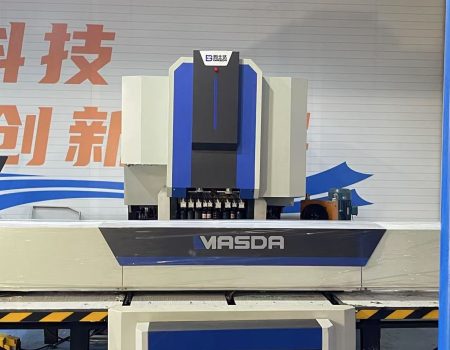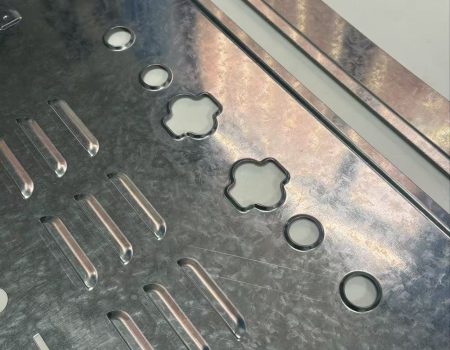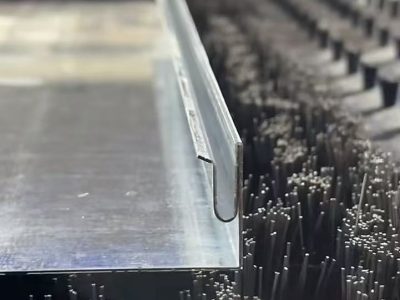
Masda CNC Punching Machine – Flanging Process
I. Origin and Technological Development of Flanging Process
The flanging process originated from the field of traditional metal stamping. In the early days, the edges of sheet metal materials were bent by dies to form vertical straight edges or flanges to meet the needs of connection, strengthening or aesthetics.
In the mid-20th century, with the rapid development of the automobile industry, flanging technology was widely used in the manufacture of parts such as car doors and fuel tanks to solve the structural strength problems of complex parts.
The introduction of modern CNC punching machines (NC) has enabled the flanging process to be digitally controlled, and combined with mold design and programming optimization, it has significantly improved processing accuracy and efficiency.
II. Application scenarios and sheet metal material adaptation
The flanging process plays an important role in key scenarios in multiple industries:
1. Automobile manufacturing: Door hinges, side panels and other parts need to be flanging to strengthen the structure and meet assembly accuracy. Commonly used materials are cold-rolled steel plates (0.5-3.0mm) and high-tensile steel.
2. Electronic equipment: Chassis, server cabinets, etc. are flanged to form heat dissipation holes or installation slots. The materials are mostly aluminum alloy (1.0-5.0mm) or stainless steel (≤2.0mm).
3. Building hardware: The decorative flange of metal curtain walls needs to take into account both weather resistance and aesthetics. Galvanized sheet or color-coated aluminum sheet is often used.
III. Core functions and technical advantages
The flange process achieves three core functions through CNC punching machines:
1. Structural reinforcement: The vertical edge improves the bending resistance of sheet metal parts, especially suitable for thin plate processing.
2. Assembly optimization: Form precise screw holes or connection positions to simplify subsequent welding and riveting processes.
3. Defect control: Step-by-step forming through progressive flanges (such as floating knife block wedge mechanism) effectively reduces springback, wrinkling and crease problems.
IV. Forming process and key technologies
The key steps of flanging forming by CNC punching machines include:
1. Mold design: Use spherical or parabolic punches to reduce material stress, the radius of the die corners matches the product requirements, and the gap is controlled to be 1.1-1.3 times the thickness of the plate to reduce burrs.
2. Programming optimization: By entering the system stamping path, the limit deformation is calculated in combination with the flanging coefficient, and the punch pressure and pressing speed are dynamically adjusted.
3. Composite process integration: such as simultaneous completion of drawing and flanging, continuous compression of materials by upper and lower pressure plates to suppress stacking defects caused by excessive flow.
Process advantages of Masda CNC punching machines
By integrating precision molds and intelligent control, Masda provides high-precision and high-efficiency flanging solutions for the manufacturing industry, promoting the industry to upgrade to high quality and low cost.


RELATED NEWS






